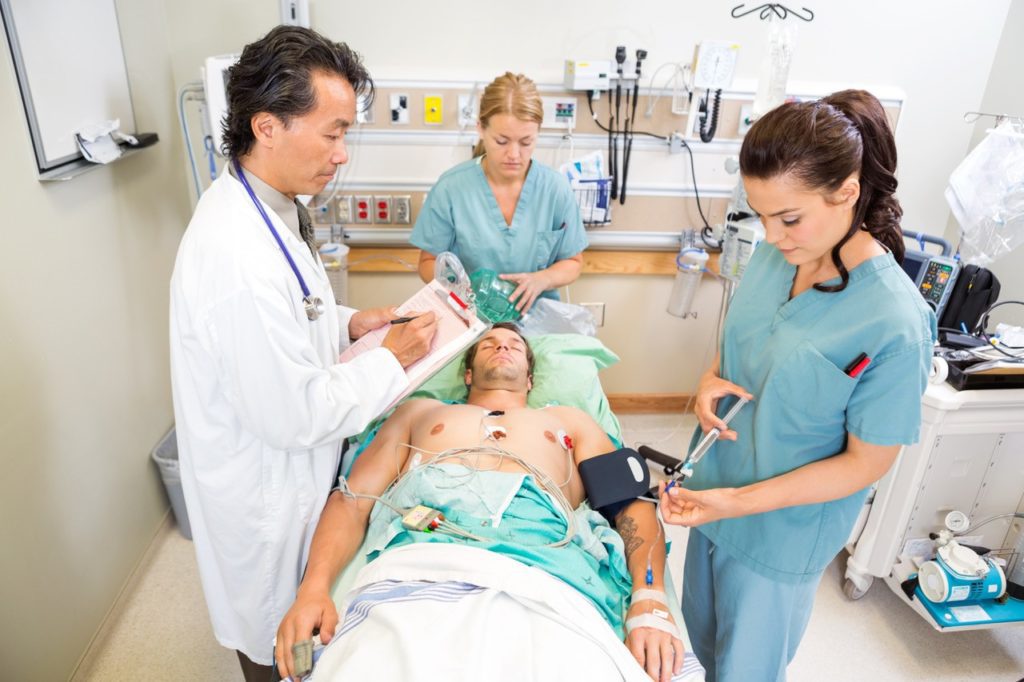Prepare your hospital for The Joint Commission's new resuscitation requirements
With RevitalPro Code Blue

January 1, 2022
The Joint Commission introduced new and revised resuscitation requirements for Joint Commission-accredited hospitals. These changes aim to improve resuscitation and post-resuscitation care by aligning the standards with present guidelines and evidence. Take a look at how RevitalPro's documentation, guidance and analytics system can help your hospital comply.
1. Ongoing Education and Training for Hospital Staff
Revised Joint Commission Requirement:
Standard PC.02.01.11:
EP 4: The hospital provides education and training to staff involved in the provision of resuscitative services. The hospital determines which staff complete this education and training based upon their job responsibilities and hospital policies and procedures. The education and training are provided at the following intervals:
- At orientation
- A periodic basis thereafter, as determined by the hospital
- When staff responsibilities change
With RevitalPro, you Can
- Offer enhanced simulation training to code teams
- Enhance simulation training by projecting RevitalPro on monitor to increase situational awareness
- Able to customize resuscitation training based on evidence from Guideline Adherence in actual events


2. Adherence to evidence-based protocols for post-resuscitation care
New Joint Commission Requirement:
Standard PC.02.01.20:
EP 1: The hospital develops and follows policies, procedures, or protocols based on current scientific literature for interdisciplinary post-cardiac arrest care.
With RevitalPro, you Can
- Retain 100% of code blue documentation and automatically transfer the comprehensive reports to the EHR
- Empower receiving care teams to be better informed as they provide follow-up care
3. Collecting and analyzing data to monitor the hospital’s resuscitation performance
New and Revised Joint Commission Requirements:
- Standard PI.01.01.01:
EP 10: The hospital collects data on the following:- The number and location of cardiac arrests (for example, ambulatory area, telemetry unit, critical care unit)
- The outcomes of resuscitation (for example, return of spontaneous circulation (ROSC), survival to discharge) Note: Return of spontaneous circulation (ROSC) is defined as return of spontaneous and sustained circulation for at least 20 consecutive minutes following resuscitation efforts.
- Transfer to a higher level of care
- Standard PI.03.01.01: EP 22: An interdisciplinary committee reviews cases and data to identify and suggest practice and system improvements in resuscitation performance. Note: Examples of the review could include:
- How often early warning signs of clinical deterioration were present prior to in-hospital cardiac arrest in patients in non-monitored or non-critical care units
- Timeliness of staff’s response to a cardiac arrest – The quality of cardiopulmonary resuscitation (CPR)
- Post–cardiac arrest care processes
- Outcomes following cardiac arrest
With RevitalPro, you Can
- Effectively manage the capturing, reporting, processing, and storing of clinical and non-clinical data and information
- Analyze undesirable patterns and trends in performance
- Make changes that improve performance and patient safety while reducing risk
- Monitor the performance of high-risk processes

RevitalPro is the ONLY in-hospital solution approved by the American Heart Association for reporting data to the Get With The Guidelines Registry.
RevitalPro is the documentation and data management solution needed to help your team navigate the complexity of cardiac arrest care and support your hospital in meeting The Joint Commission’s resuscitation standards.

